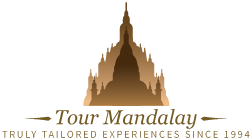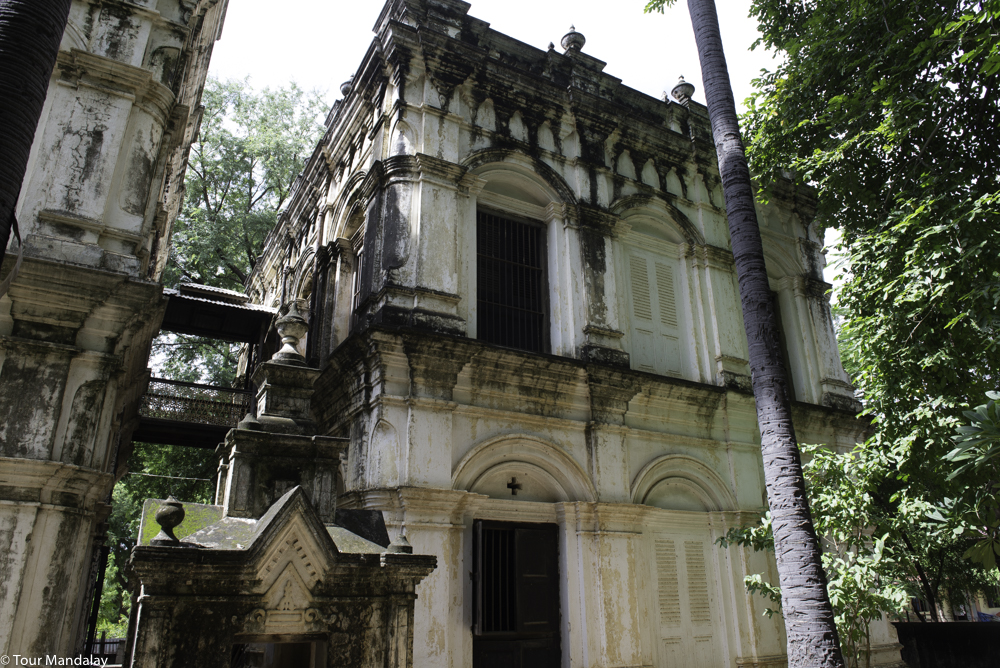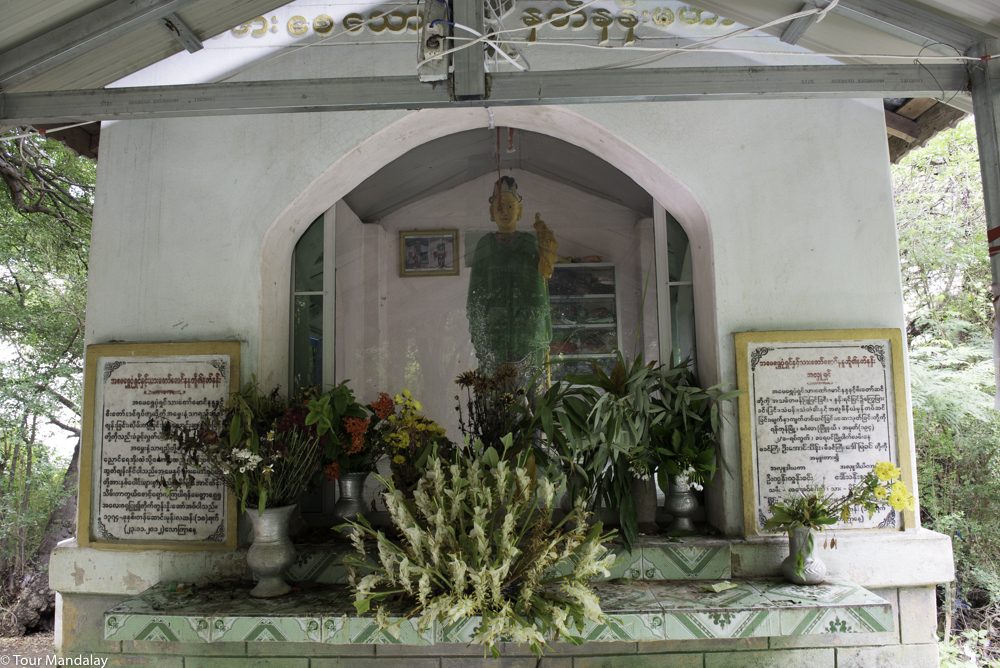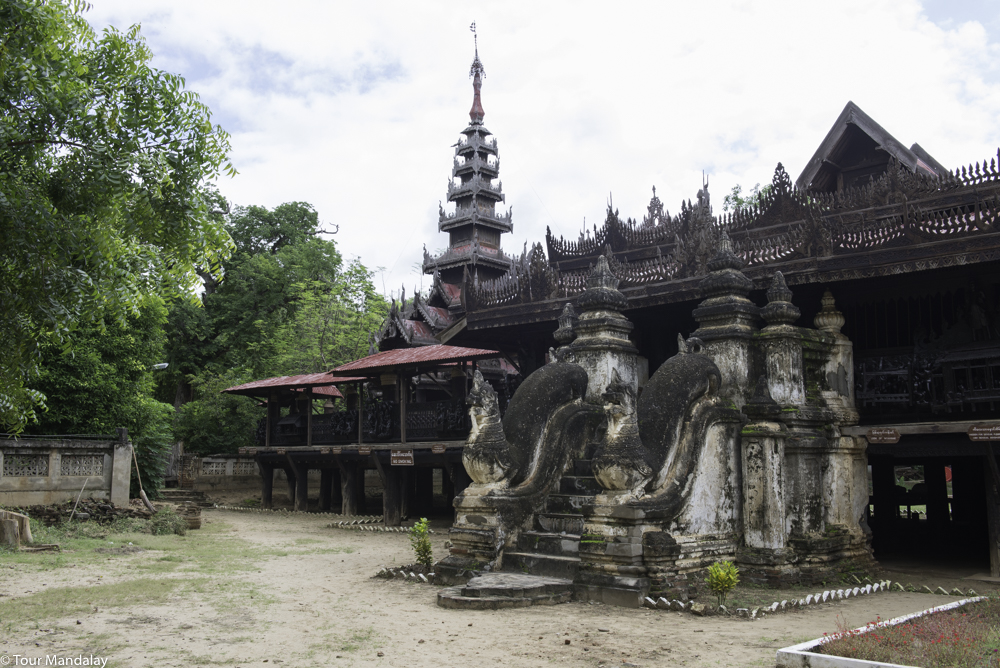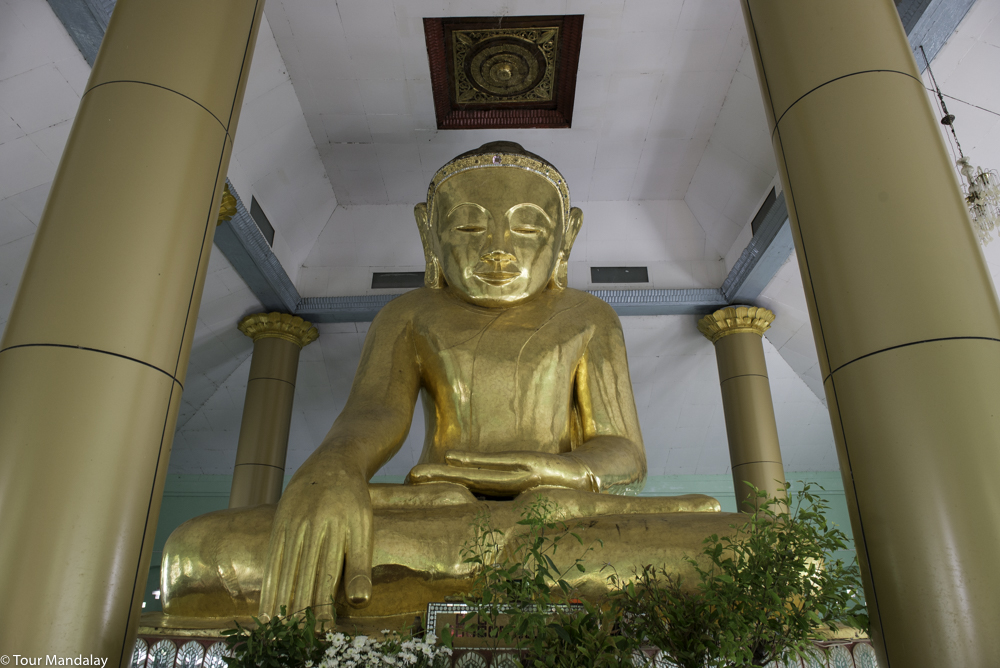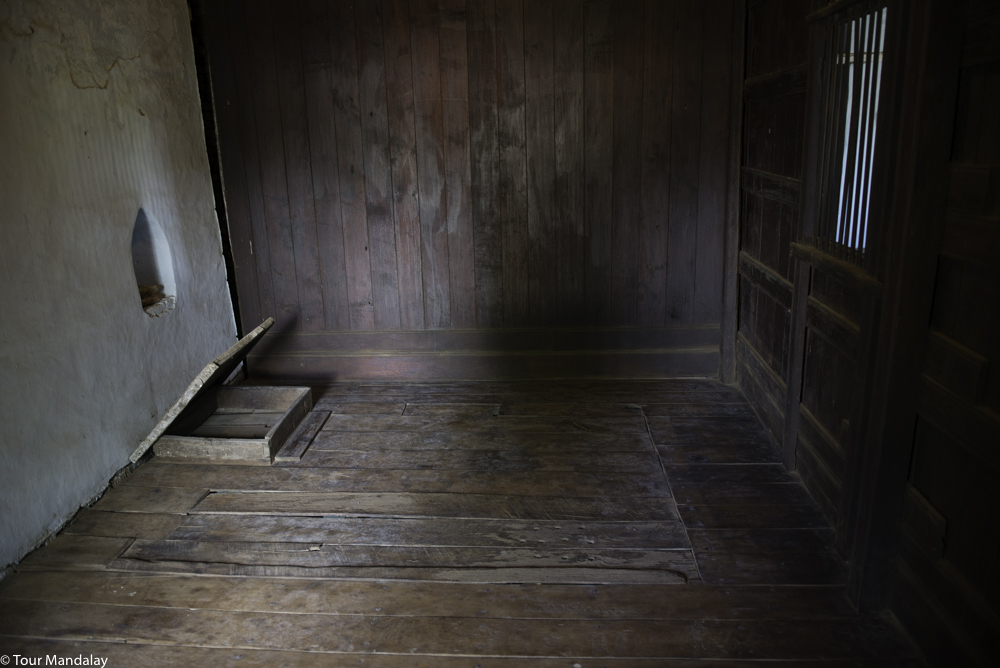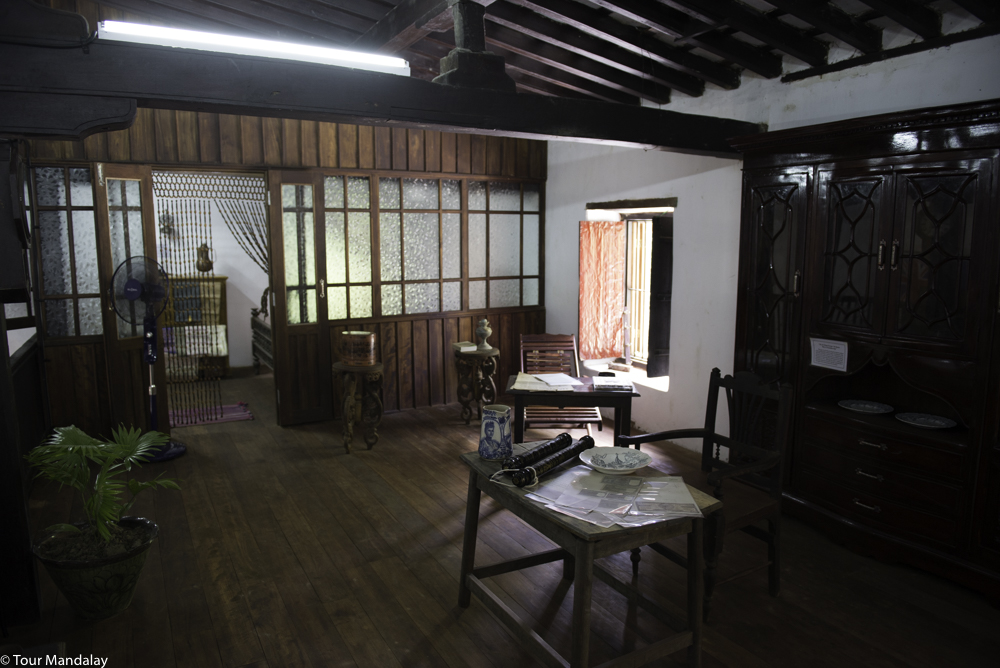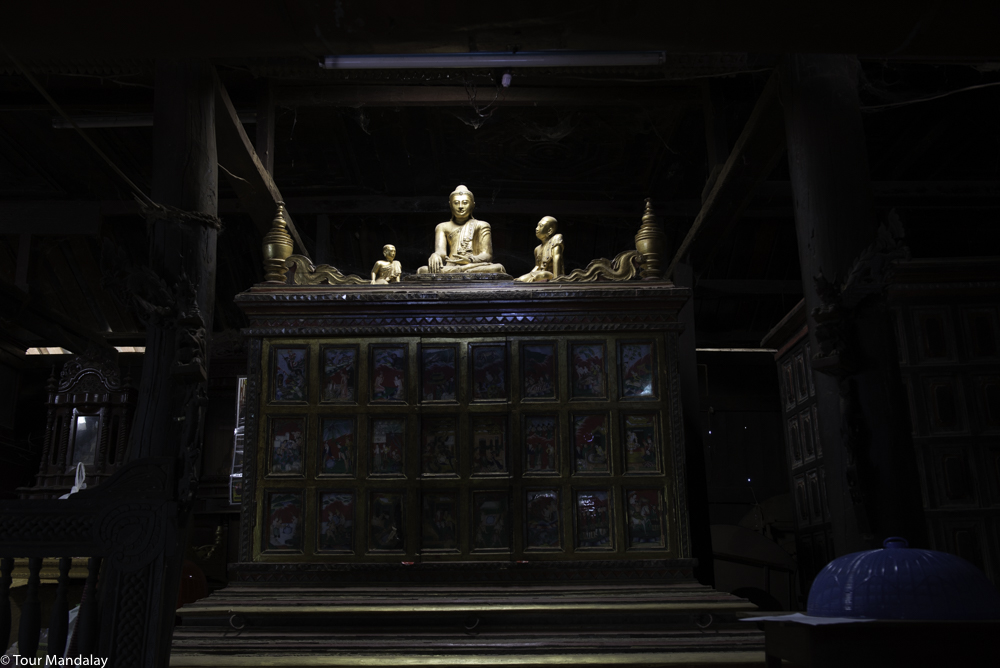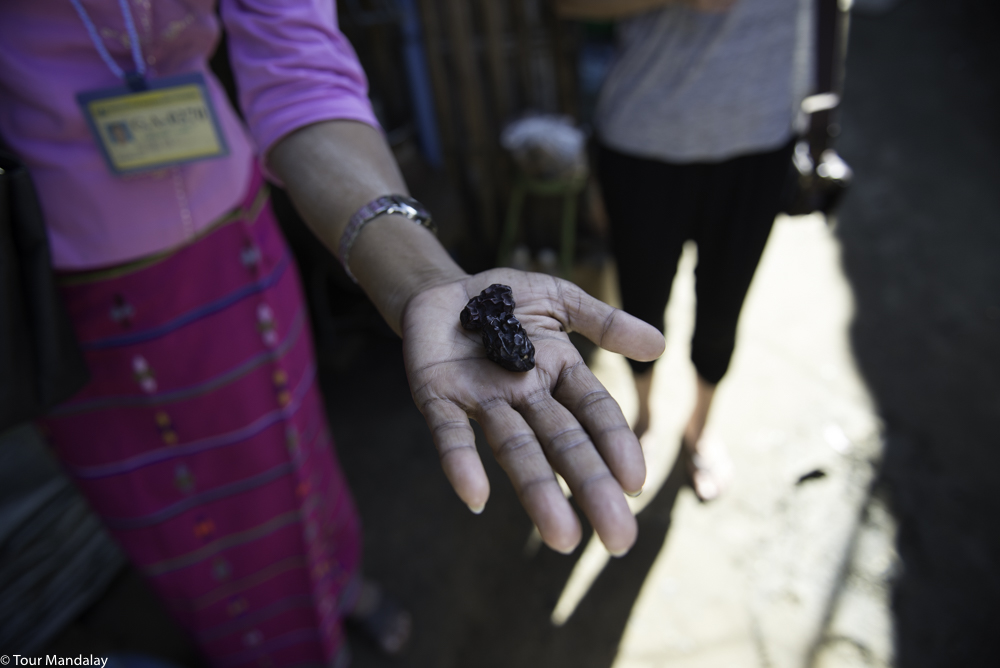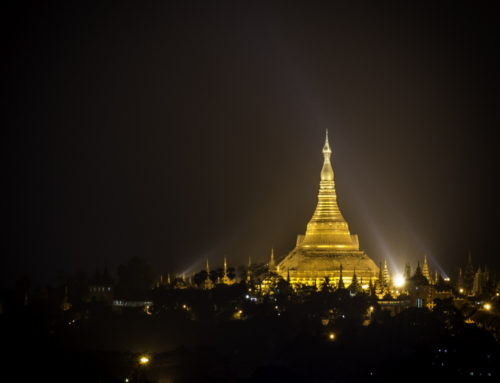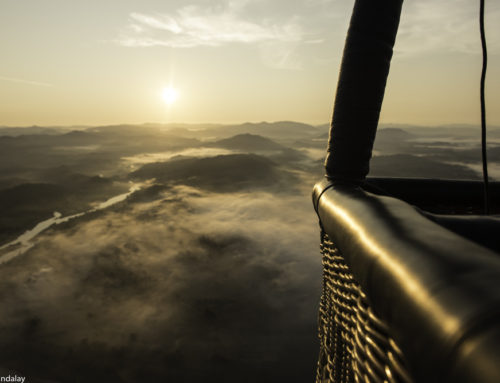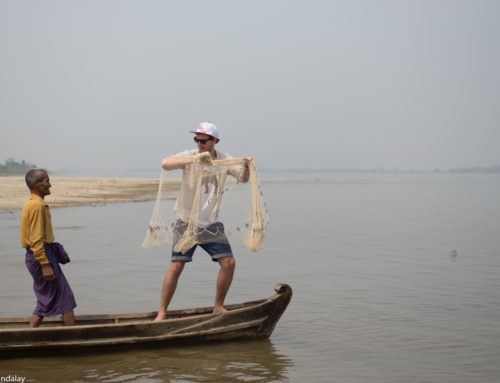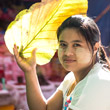- The shrine of Shwe Pone Shin in Nyaung Hla village
- One of Salay’s highlight attractions, Yoke-Sone-Kyaung
- The monk’s sleeping quarters inside Yoke Sone Monastery
- The largest lacquerware Buddha in Myanmar
- Inside U Pyo Gyi’s grand mansion
- The 2nd floor of Salay House
- A dusty prayer chest inside Sasanayaungyi monastery
- Sweet plum made in Salay
On a good day the drive from Bagan to Sa Lay will take approximately one hour and a half hours, and there are a couple of worthwhile destinations to stop off at along the way. The first, a 30-minute drive from Bagan would be Nyaung Hla village, which translates as ‘Beautiful Banyan’ in Myanmar language. The main attraction here is the thousands of fruit bats that emit high pitched squeaking sounds from the top of the tall 200-year old tamarind trees. A rare find indeed and the spectacle will surely delight any budding photo enthusiasts. At the bottom of the village, close to the picturesque riverbank, you will also find the shrine of the female nat (a sacred spirit), Shwe Pone Shin. The villagers are also incredibly friendly, so do not be surprised if you are invited inside their house for a chinwag.
The second worthwhile stop is Chauk, home to one of the largest markets in the region, and one of the best for providing an authentic local experience. People travel from miles around to source goods from here, and in some sections you could easily be tricked into believing you had travelled back 500-years. A longyi (Myanmar sarong) would go down particularly well here, as would greeting people with a confident, “Mingalarbar”.
On arrival into Sa Lay, we will first stop off at Yoke-Sone-Kyaung, a impressive teak monastery famous for the intricate wood carvings that adorn its exterior. Inside you can view a selection of rare Buddhist antiques, the likes of which are hard to find anywhere else in the country. Please note that the monastery is closed in Mondays. Equally as interesting is the 19th century building that neighbours the monastery, used by the present day monks as sleeping quarter. Interestingly, this was built by the daughter of an influential Burmese merchant / politician called U Pyo Gyi. U Pyo Gyi also made the formal request to King Thibaw to build Yoke-Sone-Kyaung, whom after accepting, famously donated the teak and other materials required for the monastery’s construction.
Across the road from Yoke-Sone-Kyaung is Man Paya Pagoda, home to the largest lacquerware Buddha in Myanmar. Dating back to the 13th century, this truly is an impressive piece of Buddhist art and it is one of the very few figures that allows visitors to take a peek inside. Five minutes here will be more than enough, but it is well worth the stop, even if it’s just to admire the size and craftsmanship of this sacred image.
Depending on time, we will then stop for lunch at Sa Lay House (cost of meal not included), a recently restored colonial mansion that now operates as a restaurant, museum and souvenir shop. They serve a decent range of Myanmar fare ranging from curries to salads.
Following lunch, we will visit U Pyo Gyi’s grand mansion, another unique colonial relic decorated with a variety of exquisite stucco designs. Now looked after by a caretaker and his family, a visit here provides a useful insight into the life of a man who was rich, often dabbled in political affairs, dangerously handsome and notorious for breaking the hearts of those he courted.
We hope a surprise highlight will be the little-known Sasanayaungyi monastery, inside of which you can find a dusty, cobweb-covered prayer chest, which currently stores hundreds of ancient Buddhist manuscripts. If one of the resident monks is not busy with his daily chores, perhaps you can ask if it is okay to take a peak inside?
Finish the day with a stop at an independently run shop selling ‘Sa Lay Zithi’, or sweet plum. The shop in question used to make and sell everything onsite, but due to the popularity of this eye-popping treat, the owner now produces everything in a factory on the outskirts of town. The plums are still packaged and coated in sugar here, so it’s still worth dropping by to sample this regional delicacy.
To book this experience, or to find out more information, please write to us now at info@tourmandalay.travel.
